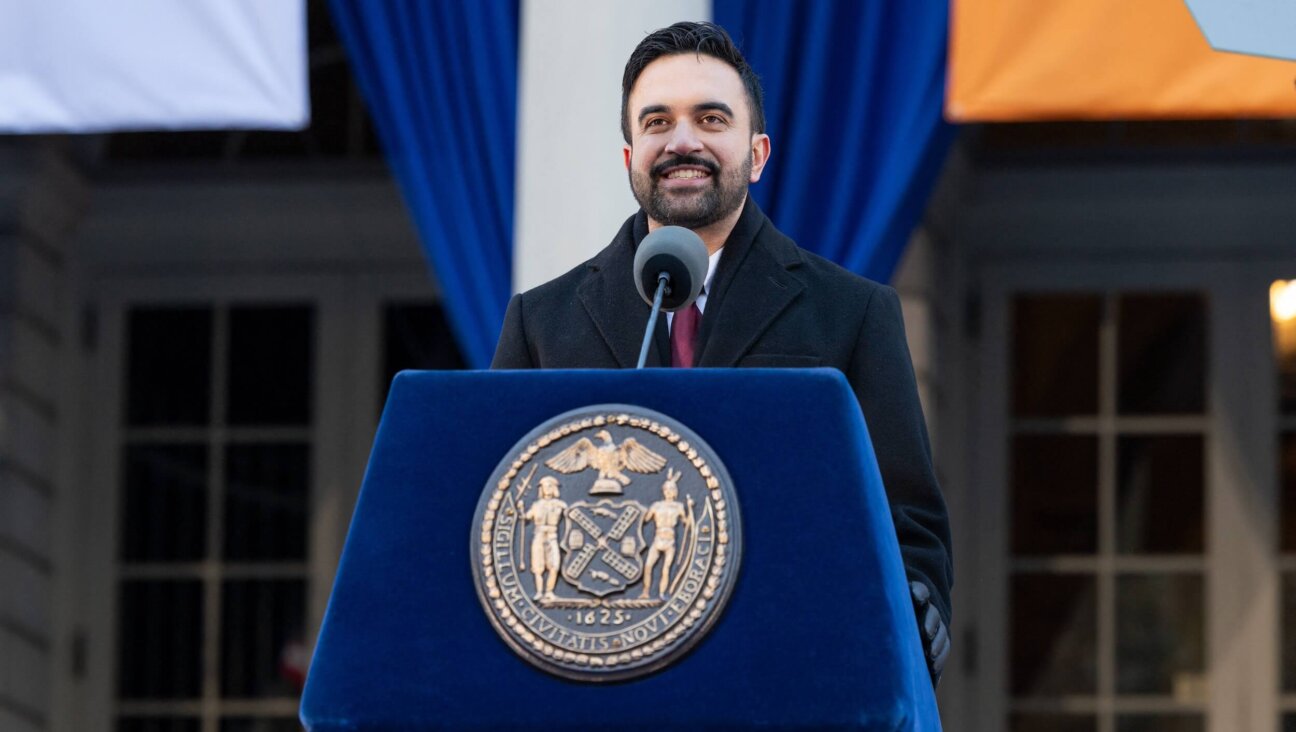Remembering the three Jewish women fencing champions who defied Hitler at the 1936 ‘Nazi Olympics’
A Jewish memorabilia collector recalls the Jewish trifecta of women athletes who won medals in foil at the 1936 Berlin Olympics

The three women’s foil fencing champions from the 1936 Berlin Olympics, from left to right: Ilona Elek-Schacherer, Helene Mayer and Ellen Müller-Preis. (Ullstein bild via Getty Images)
(JTA) — One of the most intriguing storylines for Jewish fans at the 2024 Paris Olympics has been the resurgence of Jewish excellence in fencing. Of the 20 fencers on the U.S. team, six are Jewish or come from Jewish families, and three have won medals.
The success of gold medalists Jackie Dubrovich and Maia Weintraub and bronze winner Nick Itkin reminded me of a trio of Jewish fencers who medaled at the same Olympics nearly a century ago — at the so-called “Nazi Olympics.”
Ilona Elek-Schacherer, Helene Mayer and Ellen Müller-Preis achieved the Jewish trifecta at the 1936 Summer Olympics in Berlin, Germany.
At an event overseen by Adolf Hitler himself, these three Jewish Olympians captured the gold, silver and bronze medals, respectively, in women’s foil fencing. As they each ascended the Olympic podium to receive their medals, they did so in front of the fuhrer who would soon set in motion a genocide of their people.
Despite winning the silver medal at the Olympics, Mayer is arguably the biggest story of the three.
Mayer was born in Frankfurt, Germany, to a Jewish father and a Christian mother, and was raised Jewish. She won a gold medal at the 1928 Olympics in Amsterdam, and was favored to win gold again at the 1932 Games in Los Angeles. But Mayer learned during the Olympics that her boyfriend had died in a military exercise, and, distraught, she ultimately finished in fifth place.
Entering the 1936 Olympics, Hitler — whose antisemitic manifesto “Mein Kampf” had been published 11 years earlier — allowed Mayer to represent Germany as the country’s token Jew, in an effort to refute claims that he was antisemitic. Though Mayer had left Germany in 1935 to escape the rise of anti-Jewish sentiment, she accepted the Nazi Party’s invitation to represent Germany in the Olympics, in the hopes that the gesture would help protect her family members who had remained in Germany. It was also believed that Mayer appeared on more memorabilia than most German athletes — another sign of the Nazi regime’s efforts to sportswash its antisemitism.
It was strongly rumored that Mayer received assurances that her family would be protected if she won a medal and gave the Nazi salute from the podium, which she did. She ultimately came in second, falling to fellow Jewish opponent Ilona Elek-Schacherer of Hungary.
An official 1936 Olympic card shows the Jewish trifecta on the podium with Mayer performing the Nazi salute. While some might frown at the spectacle, Mayer’s family survived the Holocaust.
After the Olympics, Mayer returned to the United States and became an eight-time champion in fencing. She was named by Sports Illustrated as one of the top 100 female athletes of the 20th century. Mayer passed away in Heidelberg, Germany, in 1953.
Ellen Müller-Preis, the bronze medalist, was born in Berlin and wanted to fence for Germany at the 1932 Olympics, but Germany refused to allow her on the team due to her religion. Hitler’s election as German chancellor was a year away, but antisemitism was already high in Germany.
Müller-Preis did not let antisemitism stop her from making it to the Olympics: She decided to represent Austria in 1932, and went on to win the gold medal. The German Olympic Committee was reportedly very angry that Müller-Preis won a gold medal for another country.
Due to World War II, there were no Olympics in 1940 or 1944. At the 1948 Olympics in London, Müller-Preis won the bronze medal again while representing Austria.
In 1949, Müller-Preis was named Austrian female athlete of the year. At the age of 44, the ageless wonder competed at the 1956 Olympics in Melbourne and finished in seventh place. Her Olympic career, which spanned 1932 to 1956, was at the time the longest of any female athlete.
The gold medal in women’s foil fencing at the 1936 Games went to Ilona Elek-Schacherer. She was born in Budapest to a Jewish father and Christian mother and came from a fencing family. Her younger sister Margit was also active in the sport.
Elek-Schacherer won gold again in 1948 and silver in 1952. She also won 10 gold medals, five silvers and two bronzes at world championships between 1934 and 1956 — the most international fencing titles of any woman in history.
With one raise of her arm, Mayer would overshadow the Jewish stories of the first- and third-place finishers. Nonetheless, all three Jewish fencers ought to be remembered for their achievements, for their courage and the painful choices they made in dangerous times.
The views and opinions expressed in this article are those of the author and do not necessarily reflect the views of JTA or its parent company, 70 Faces Media.














